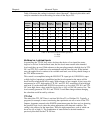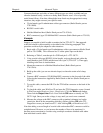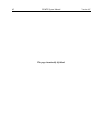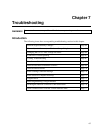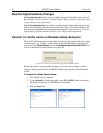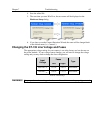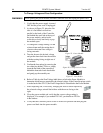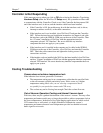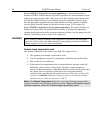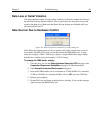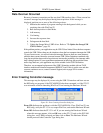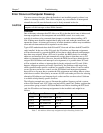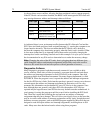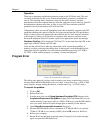
Chapter 7 Troubleshooting 67
Controller Is Not Responding
If this message pops up when you click on OK after selecting the Interface Type during
Hardware Setup (under the WinView/32 Setup menu), the system has not been able
to communicate with the Controller. Check to see if the Controller has been turned ON
and if the interface card, its driver, and the interface cable have been installed.
If the Controller is ON, the problem may be with the interface card, its driver,
interrupt or address conflicts, or the cable connections.
If the interface card is not installed, close WinView/32 and turn the Controller
OFF. Follow the interface card installation instructions in Chapter 4 and cable
the interface card to the SERIAL COM port on the rear of the Controller. Then
do a "Custom" installation of WinView with the appropriate interface
component selected: "PCI Interface". Be sure to deselect any interface
component that does not apply to your system.
If the interface card is installed in the computer and is cabled to the SERIAL
COM port on the rear of the Controller, close WinView and turn the Controller
OFF. Check the cable connections and tighten the locking screws if the
connections are loose.
If the interface card was installed after WinView has been installed, close WinView
and do a "Custom" installation of WinView with the appropriate interface component
selected: "PCI Interface". Be sure to deselect any interface component that does not
apply to your system.
Cooling Troubleshooting
Camera does not achieve temperature lock
If the indicator does not turn green after 30 minutes:
The temperature setting may be at a temperature colder than the specified limit
or the environment could be particularly warm. If this occurs, try a higher
temperature setting. Make sure you are selecting a temperature that is
acceptable for your particular camera and CCD array.
The coolant may not be flowing fast enough. Check the coolant flow rate.
Out-of-Vacuum Operation Cooling and Internal Vacuum Level
With time, there may be a gradual deterioration of the camera’s vacuum. This may affect
temperature performance and it may no longer be possible to achieve temperature lock at
the lowest temperatures. In the kind of low-light imaging applications for which cooled
CCD cameras are so well suited, it is highly desirable to maintain the system’s
temperature performance because lower temperatures provide less thermal noise and
better signal-to-noise ratio.



